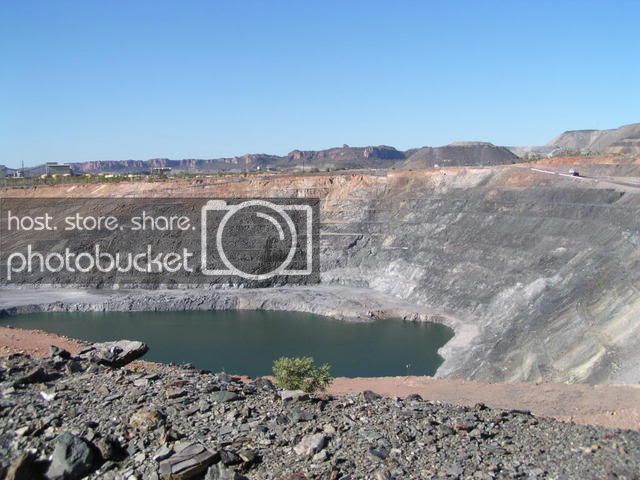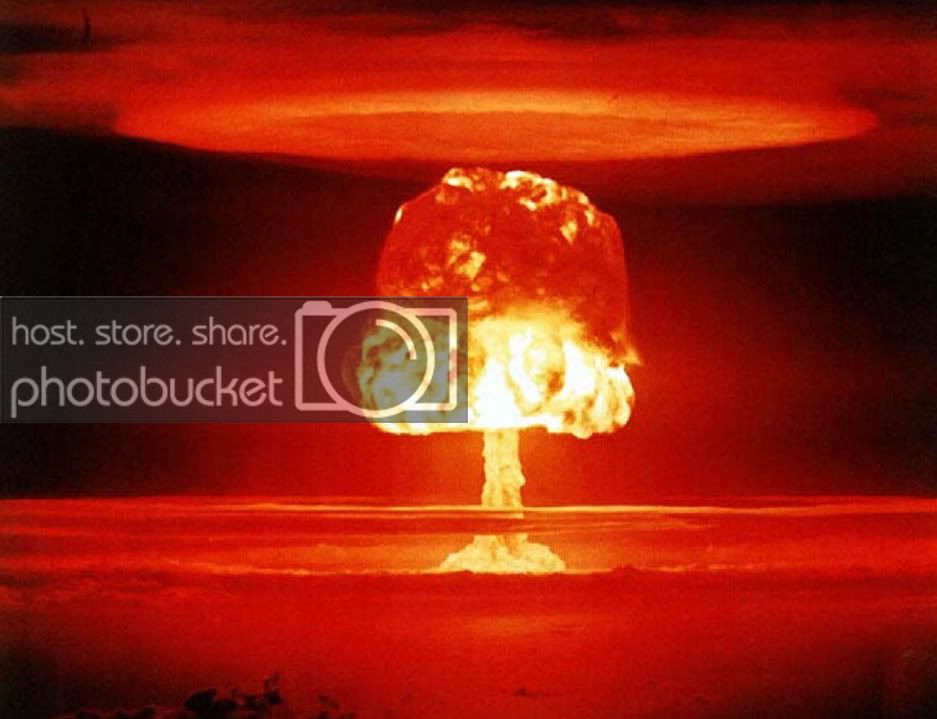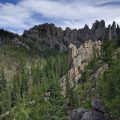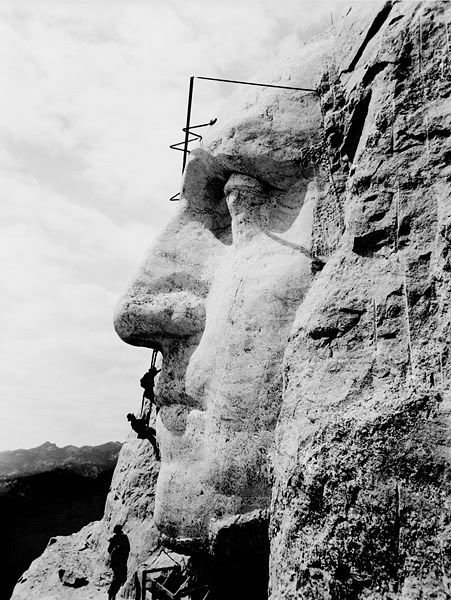( – promoted by navajo)
A British mining company is about to begin exploratory drilling for toxic, radioactive uranium in Kaibab National Forest just outside the eco-fragile boundaries of Grand Canyon National Park.
Of course, the idea of uranium is being sold as if it were an absolute necessity.
Do these companies really care about the beauty of the Earth Mother,

they’re altering for the worst?

(only photo of a uranium mine I could find)
No.
This ill-conceived drilling is powerful evidence that tighter restrictions must be enacted to protect the Canyon. It further indicates the critical need to modernize the General Mining Act of 1872, which authorizes mining for economic minerals on federal public lands.
Funny thing about that capitalistic motivation is that in spite of it, there is now an example of an energy efficient home from Extreme Makeover.
So, let’s consider clean energy usage from that new Navajo home verses “high levels of cancer and areas of radioactivity.”
Uranium mining has been linked to high levels of cancer and areas of radioactivity on the Navajo Reservation. The tribe has banned it. The various mining techniques used all risk contaminating the groundwater aquifer or surface water.
Next, let’s consider clean energy usage from that new Navajo home verses “how the uranium mining will affect their water, livestock and their families.”
People in Wyoming and South Dakota are afraid of how the uranium mining will affect their water, livestock and their families, just like their Coloradan neighbors to the south, but they are more afraid of the ramifications of speaking up, White Face said.
Last of all, let’s consider clean energy usage from that new Navajo home verses “Uranium dust from abandoned open-pit mines in Wyoming makes its way into South Dakota, she said, and it even finds its way into the Cheyenne River, which flows into South Dakota’s Black Hills, uranium-rich in its own right.”
White Face said she’s seen firsthand the sorts of things uranium can do to public health, even in more remote parts of the United States. Uranium dust from abandoned open-pit mines in Wyoming makes its way into South Dakota, she said, and it even finds its way into the Cheyenne River, which flows into South Dakota’s Black Hills, uranium-rich in its own right.
Oh wait,
we need to consider clean energy usage from that new Navajo home verses “… make(ing) yellowcake. That material can be turned into weapons-grade uranium or enhanced for use in nuclear power plants.”
Groundwater is oxidized and turned into a solution called a “lixiviant,” which is forced down into the sandstone layers, where the uranium is essentially drawn to combine with the water. The solution is pumped back to the surface and combined with resin beads in a process that works basically the same way as a home water softener. Molecules of uranium hop on to the resin beads, which are taken to a processing facility to strip the uranium off, refine it and make yellowcake. That material can be turned into weapons-grade uranium or enhanced for use in nuclear power plants.
I’d said earlier that there’s a funny thing about that capitalistic motivation,
which is why I don’t foresee the clean energy usage from that new Navajo home being used widely anytime soon, or in my lifetime.
Uranium mining is no solution to the impending doom of it now being merely five minutes to midnight,
(emphasis mine)
The Bulletin of the Atomic Scientists’ Doomsday Clock conveys how close humanity is to catastrophic destruction–the figurative midnight–and monitors the means humankind could use to obliterate itself. First and foremost, these include nuclear weapons, but they also encompass climate-changing technologies and new developments in the life sciences and nanotechnology that could inflict irrevocable harm.
– snip –
Unfortunately, however, the possibility of a nuclear exchange between countries remains.
as uranium mining becomes more common, it may facilitate even more “possibility of a nuclear exchange between countries,” drawing us closer to midnight.
Famine sweeps the Third World. A billion people flee across borders. Vast regions become abandoned. Governments fall. Hundreds of millions die.
This is the future that might overwhelm the planet if any of the eight nuclear-armed countries – or the 35 other countries with enough weapons-grade fuel build their own bombs – start blasting their enemy’s cities with low-yield nuclear weapons.
(Take accordingly. I don’t think anyone but real intelligence has the real numbers, but the point is made)
• Where are the bombs?
• Pakistan –
– 52 warheads• India –
– 85 warheads• Israel –
– 116 warheads• Britain –
– 200 + warheads• France –
– 350 warheads• China —
400 warheads• USA –
– 10,315 warheads• Russia –
– 16,200 warheads
Think how much uranium had to be used to make all those nuclear weapons and how much beautiful land had to be ruined. Furthermore, think of how much “uranium dust from abandoned open-pit mines” caused health problems, how much uranium mining affected “water, livestock, and families,” and the cumulative effects of the “high levels of cancer and areas of radioactivity” caused by all those uranium mines.
The uranium mining companies must be soooooooooooooo concerned about the possible future of our planet,

or not.




Thanks for posting this!
I’l post it around some other places today as well and hopefully it helps stop it.